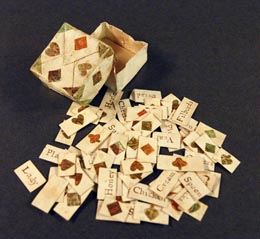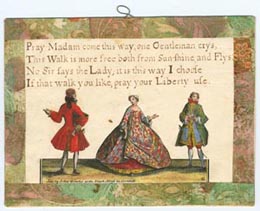|
|
The
Working Narratives |
|||
|
On this site you'll
find info on recent and past talks, papers, & research
including: Characteristics of narrative engagement in print & in games such as interactivity & agency Children's development & their changing perception of narrative once they enter school Myth
of Narrative Climax: the Subjugation of Narrative Structure And
other topics related to narrative, interactivity & new media. This site is always under construction! |
|
This
archaelogical find of treasures that had made
The paper, "Jane Johnson's Shoebox, Literacy Ephemera and Imaginative Teaching Strategies in the 1700s," presented at the 7th International Conference on Imagination and Education in Vancouver, July, 2009, will soon be available on this site.
A.
|
|
|
You
have reached the website of Krystina
Madej
Comments and questions are welcome. Forward to ksmadej@sfu.ca.
This page last updated January 2010. Copyright
Krystina Madej 2000 - 2010

 B.
B.



